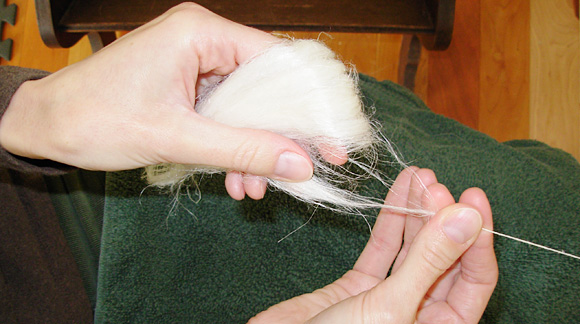
 1
1




Simone Gar wrote:Awesome thread. I love linen! It is still huge in Europe, not so much here in North America. I am looking for linen right now actually and have a hard time to find any, especially untreated (organic?) soft linen.
If somebody get's going on this and produces linen, let me know I am a potential buyer
 5
5











 4
4




![Filename: image.jpg
Description: [Thumbnail for image.jpg]](/t/47529/a/35349/image.jpg)
 3
3











 4
4




"Also, just as you want men to do to you, do the same way to them" (Luke 6:31)
 4
4




Inge Leonora-den Ouden wrote:Thank you for the information! Through the link I found your blog Trampled By Geese. There's a lot more to see and read there!
I have a little bit of flax seed, my sister gave me. I hope it will grow ... And I'll look for more.







 6
6









 5
5




 1
1




 3
3




Steven Feil wrote:For the dew processing method in dry areas: could one lightly mist it each morning if there is not any moisture?








 3
3





 3
3




R Ranson wrote:If you have a chance, please share a photo of your wild flax.

 2
2




Shenanigans of the sheep and wooly sort.. And many more.. https://www.instagram.com/girlwalkswithgoats/
Papa always says, "Don't go away angry... just go away."
 4
4




kadence blevins wrote:I can't read the full thread right now but from what I know about flax there are varieties that are better seed and varieties that are better fiber. For those getting into this does anyone happen to have found these and the variety names?













 2
2




"Also, just as you want men to do to you, do the same way to them" (Luke 6:31)




R Ranson wrote:If you have a chance, please share a photo of your wild flax.

 6
6













 3
3





"Also, just as you want men to do to you, do the same way to them" (Luke 6:31)

 2
2




Kris Arbanas wrote:Great thread! I'm really excited about the possibilities with flax because I have some wet spots and have heard that it is one of the few crops that can take wet feet. Is this true?
R Ranson, is there anywhere in Western or Canada wide that sells growing seed?
The seeds have little umbrellas on them like lettuce seed. So far it looks like it is going to be a very good year for it; much of the field has grown all winter. I have shallow ponds in the field with reeds that I can bind the bundles and put it to ret in the fall.Linum lewisii, Lewis Blue Flax, grows as a perennial on my farm and in the surrounding wildlands. It does not require irrigation. I've made fiber threads out of it, but rhetting and schutching don't seem to work near as well as shown in the videos using domesticated flax. The seeds are much smaller as well.
Hans Albert Quistorff, LMT projects on permies Hans Massage Qberry Farm magnet therapy gmail hquistorff
 1
1










 6
6






"Also, just as you want men to do to you, do the same way to them" (Luke 6:31)

 7
7




 4
4




 (even if I did go waaay over the word limit).
(even if I did go waaay over the word limit).














 3
3




Hans Albert Quistorff, LMT projects on permies Hans Massage Qberry Farm magnet therapy gmail hquistorff
 4
4




 so I need to re-ret it.
so I need to re-ret it.








 4
4




Joseph Lofthouse wrote:Here's what my fiber flax patch looked like yesterday...
Also a comparison of wild perennial flax (top) to one of the fiber flax plants.















 3
3




I think I'm going to take a chance and plant some of the seeds at least.
Hans Albert Quistorff, LMT projects on permies Hans Massage Qberry Farm magnet therapy gmail hquistorff
 1
1





Permaculture market farming, plant breeding and perennial grains: http://jasonpadvorac.com
 1
1















 3
3




Hans Albert Quistorff, LMT projects on permies Hans Massage Qberry Farm magnet therapy gmail hquistorff
 2
2




Danette Cross wrote:BTW I see some of the sources listed, but 450 seeds isn't going to be enough. I am looking for about 1/2 - 1 pound.















Danette Cross wrote:I've grown flax several times. My land has several micro zones, compared to my old place that was basically all the same, so I need to test in several areas, not just one plot, so need more seed.







 3
3





|
You would be much easier to understand if you took that bucket off of your head. And that goes for the tiny ad too!
The new permaculture playing cards kickstarter is now live!
https://www.kickstarter.com/projects/paulwheaton/garden-cards
|









